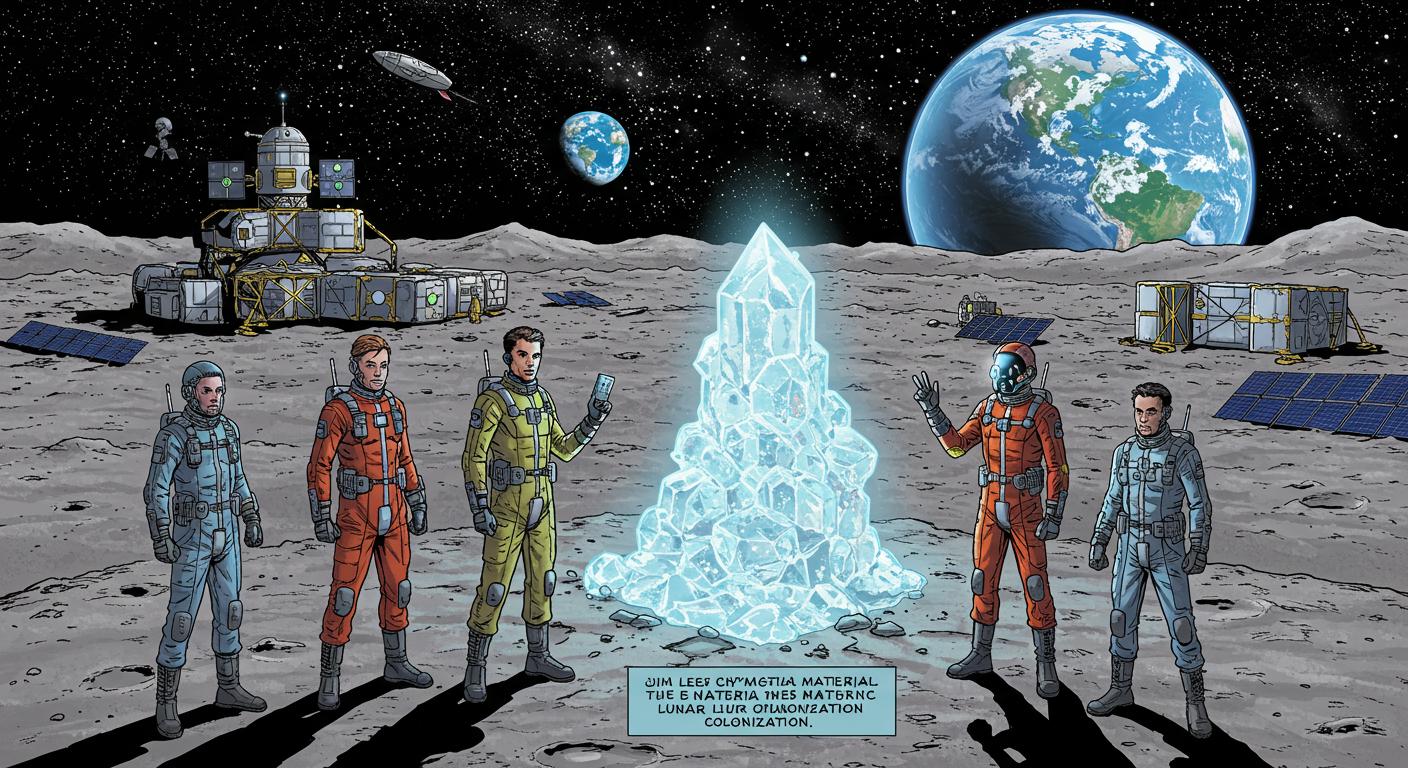Fifty-six years after Neil Armstrong pulled on his boots and took that iconic stroll across lunar terrain, humanity’s dreams of setting up permanent camp on the Moon have remained in the realm of science fiction—or at best, an exercise in extremely expensive logistics. Yet, in a twist documented by Metro, the unlikely secret to unlocking lunar civilization might just be underfoot. Some call it “magic.” Others might call it the world’s most improbable recycling project: lunar soil.
Lunar Real Estate: BYOW (Bring Your Own Water)
The whole “living on the Moon” fantasy has always collided rather abruptly with the supplies list. Water, the most mundane of travel essentials, turns out to be so logistically complicated that it makes suitcase packing look like child’s play. According to figures cited by Metro, just one gallon of water lugged to the lunar surface would set you back close to £61,000—not quite the bargain bulk buy, and barely enough for an astronaut’s daily thirst, which typically runs around four gallons. So unless someone’s planning to fill the colony with parched houseplants, shipping water from Earth is both unsustainable and, well, ridiculous.
That’s where the so-called “magic” comes in. Researchers at the Chinese University of Hong Kong, as described in Metro’s report, have managed to coax water directly out of the Moon’s own chalky regolith—the blanket of rock fragments and dust that gives the lunar landscape its distinct, unwashed look. The process involves heating ilmenite, a lunar mineral, with sunlight to release water trapped inside. All of this clever engineering doesn’t stop at beverages, either. The water can then be used in a photothermal reaction—converting carbon dioxide, including that exhaled by astronauts, into hydrogen gas (suitable for fuel) and oxygen (always handy for breathing). Lead researcher Lu Wang, quoted in Metro, remarked: “We never fully imagined the ‘magic’ that the lunar soil possessed,” a sentiment that seems fitting—who really expects the answer to space survival to involve what amounts to cosmic dust-busting?
These innovations could, according to the study’s authors as documented by Metro, eliminate the astronomical costs involved in hauling basic resources up to the Moon and “potentially open new doors for future deep space exploration.” It’s certainly more elegant than sending a perpetual parade of supply rockets across 238,000 miles of emptiness.
DIY Moon: If You Want Something Done, Build It from Dust
Resourcefulness is the word of the day. In an approach reminiscent of a high-stakes crafting challenge, NASA’s plans (outlined in Metro’s coverage) involve sending a 3-D printer to the Moon—not for plastic keychains, but for constructing actual shelters out of lunar concrete, fabricated using the ever-present moon dust and rock chips. This in-situ solution partly addresses a problem Metro highlights: lunar regolith, while handy for construction, is famously irritating and hazardous for astronauts, an airborne grit that never quite respects helmet boundaries.
Meanwhile, the outlet also notes that other countries are putting their mark on the Moon’s increasingly crowded calendar. Plans referenced by Metro, citing The Korea Times, indicate that South Korea intends to develop lunar landers by 2040 and build a “lunar economic base” within five years after that. You have to wonder what sort of lunar HOA meetings might await us in this brave new world of celestial property development.
A Colony Built on Dust and Ingenuity
Of course, as Metro points out, significant hurdles remain: draconian temperature swings, relentless radiation, and the unique charm of low gravity all complicate efforts to harvest water and build oxygen supplies out of surface materials. Nothing says “hostile work environment” quite like a landscape designed to slowly sandblast electronics and vital organs alike. Still, there’s a certain poetry to the possibility that, in one of the ultimate acts of cosmic upcycling, the stuff once considered useless lunar grit could be the foundation—literally and figuratively—of Moon life.
Will recipes for regolith lasagna or oxygen cocktails ever catch on? The odds seem slim. But isn’t it oddly comforting to think that on a cold, lifeless hunk of rock, the solution to our most basic needs has just been lying there, waiting for someone to give it a nudge? If lunar dust really is the magic ingredient, which other everyday nuisances are secretly harboring the next leap for humankind?







